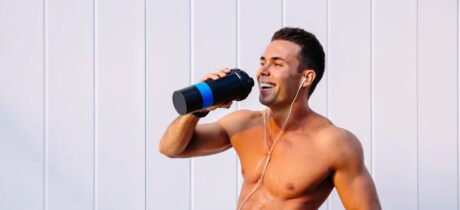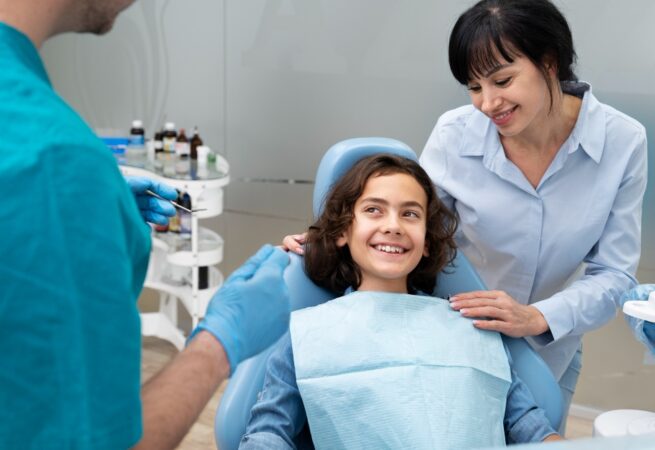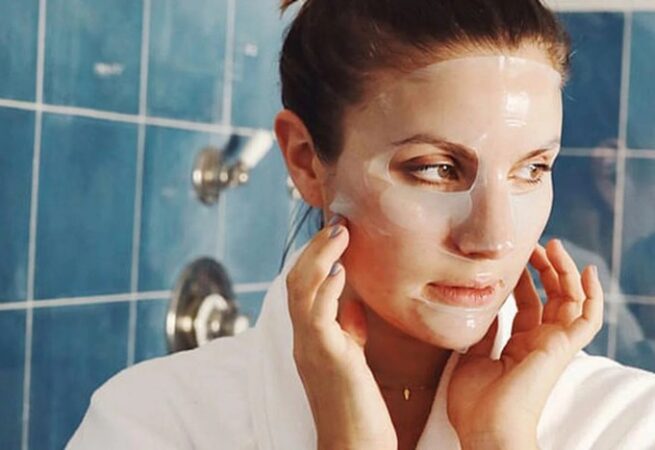

A Family Dentist Builds Healthy Smiles That Last from Childhood to Adulthood
A family dentist is essential to maintaining the health of your smile for the rest of your life. They give care that develops with you and are aware of each family member’s evolving requirements. Beyond just providing regular examinations, a reputable dentist in Fairfax, VA, fosters connections that promote long-term dental health. Every generation benefits from confident, healthy smiles year after year because of your family dentist’s constant care, education, and prevention.
Find below five ways in which your family dentist promotes a lifetime of healthy smiles.
Continuity Of Care Builds Lasting Trust
Your family can develop comfort and trust by continuing to see the same dentist over time. Your dentist can identify minor changes early since they are familiar with your dental history. This continuing partnership guarantees individualized treatment and early identification of possible problems, averting more serious dental concerns down the road.
Tracking Family Dental History Helps Prevent Problems
Every member of your family’s oral health is meticulously documented by your family dentist. They can predict hazards like gum disease or tooth decay by knowing genetic patterns. They can develop individualized care regimens that preserve your family’s smiles throughout time thanks to this proactive approach.
Education For All Age Groups Encourages Good Habits
A family dentist teaches good behaviors in addition to treating teeth. They educate adults about preventative care, counsel adolescents about nutrition and braces, and teach children how to brush and floss. Your dentist helps everyone take better care of their smiles at home by educating the whole family.
Preventive Care Protects Future Smiles
Fluoride treatments, routine cleanings, and examinations help stop issues before they begin. Instead of only treating problems, your family dentist emphasizes prevention. This maintains the strength and health of your family’s teeth and gums while saving time, money, and discomfort.
A Welcoming Environment Makes Dental Visits Easy
Family dentistry offices foster a welcoming environment where people may unwind. While adults value the convenience of taking care of the entire family in one location, children discover that dentist checkups may be beneficial. Consistent visits and improved dental health for life are encouraged by this encouraging setting.
To Sum Up
More than just a dental professional, your family dentist is a lifetime collaborator in making sure that everyone in your family has strong, attractive, and healthy smiles.

A Beginner’s Guide to Peptides in Skincare
Peptides are short chains of amino acids that your body uses for many important functions. Amino acids are the building blocks of proteins, and when they link together, they form peptides. These peptides then help create larger proteins that support different parts of the body. Today, many people also choose to purchase peptides in the form of supplements or skincare products because of their potential benefits.
Peptides are found naturally in the skin, but they are also added to creams, serums, and lotions. They can even be found in different foods. Because they are smaller than full proteins, peptides can be absorbed more easily by the skin, making them useful in many skincare products which is why so many are purchasing quality verified peptides.
How Peptides Help Your Skin

What Peptides Do in Skincare
Your skin naturally contains peptides, but their levels slowly decrease as you age. Since peptides help form important proteins like collagen and elastin, a drop in peptide levels can lead to changes in skin texture, firmness, and overall appearance.
Collagen and elastin play a big role in keeping your skin looking healthy, hydrated, and youthful. Peptides also help form keratin, which supports brighter-looking skin, smoother texture, and even shinier hair.
Because full proteins are too large to enter the skin, skincare products often use peptides instead. These smaller chains can move through the skin more easily and support its natural repair and renewal process.
If you want to check whether your products contain peptides, look for names like dipeptide, tripeptide, tetrapeptide, hexapeptide, and oligopeptide on the ingredient list. You may also see words like palmitoyl or carnosine, which are types of peptides used in skincare.
Main Benefits of Peptides in Skincare
1. Strengthening the Skin Barrier
Your skin barrier protects you from dryness, irritation, and pollution. When this barrier becomes weak, your skin may look dull or become sensitive. Peptides can help support and strengthen this barrier, making your skin better at holding moisture and staying healthy.
2. Reducing Fine Lines and Wrinkles
Because peptides help support collagen production, they can help reduce the look of fine lines and wrinkles. With regular use, skincare products with peptides may help your skin appear smoother, firmer, and more refreshed.
How to Add Peptides to Your Skincare Routine
Choose the Right Products
The best way to start using peptides is through serums and creams. These stay on the skin longer, giving the peptides more time to be absorbed. Applying them in the right order also helps—usually after cleansing and before moisturizer (or as your moisturizer, depending on the product).
Use Peptides With Hydrating Ingredients
Peptides work well with many other skincare ingredients. To get the most benefit, combine them with hydrating and calming ingredients like niacinamide or hyaluronic acid.
For example, a serum like the Cetaphil Healthy Radiance Antioxidant-C Serum includes niacinamide and a gentle form of vitamin C. These ingredients help brighten the skin, reduce signs of sun damage, and support skin radiance while working well with peptides.
The Bottom Line
Peptides are powerful building blocks that support the proteins your skin needs to stay smooth, firm, and hydrated. As natural peptide levels decrease over time, adding peptide-based products to your routine can help your skin stay strong and youthful-looking. When paired with other gentle and hydrating ingredients, peptides can help restore moisture, improve texture, and keep your skin glowing and healthy.
If you want to support your skin in a simple but effective way, using products with peptides is a great place to start.

DreamyFoam Pillow Reviews: A Guide to Neck and Joint Relief
After a full day of standing in front of a classroom or sitting for hours grading assignments, it’s no surprise that teachers—and anyone with a demanding schedule—often experience musculoskeletal fatigue. This kind of fatigue, which affects muscles and joints, can build up silently and, over time, lead to discomfort, stiffness, and even chronic pain. As educators, we know the importance of self-care, not just for our own well-being but also to set a positive example for our students. One of the most effective ways to recover from daily strain is through quality sleep, and the right pillow can make all the difference.
Let’s explore how the DreamyFoam Pillow can be a game-changer for teachers and anyone seeking better rest and recovery.
Why Quality Sleep Matters for Teachers and Musculoskeletal Health
Before diving into the specifics of the DreamyFoam Pillow, it’s essential to understand why sleep is so vital for recovery. Standing or sitting for extended periods can lead to muscle fatigue, joint stiffness, and poor posture. These issues are especially common among teachers, who often push through discomfort to meet the needs of their students. However, neglecting rest and recovery can have long-term consequences.
Sleep is not just a period of rest; it’s when our bodies actively repair and regenerate. During deep sleep, growth hormone is released, supporting tissue repair, muscle growth, and the reduction of inflammation. Adequate sleep also replenishes muscle glycogen stores, restores energy, and regulates hormones critical for musculoskeletal health. Without enough restorative sleep, recovery slows, pain perception increases, and the risk of injury rises.
For educators, quality sleep is also linked to sharper cognitive function, better emotional regulation, and improved classroom performance. Simply put, a good night’s sleep is foundational for both physical and mental resilience.
What is DreamyFoam Pillow?
The DreamyFoam Pillow is an orthopedic, contour memory foam pillow designed to support spinal alignment and relieve muscle and joint pain—especially in the neck and shoulders. Unlike traditional pillows that can flatten or fail to provide adequate support, DreamyFoam uses advanced viscoelastic memory foam that adapts to your body’s unique shape and weight distribution.
Key Features of DreamyFoam Pillow
- Ergonomic Contour Design: The pillow’s shape is engineered to cradle your head and neck, maintaining the natural curve of your spine. This helps prevent the unnatural bending that often leads to stiffness and pain.
- Adaptive Memory Foam: DreamyFoam’s core material molds to your body, offering personalized support and pressure relief for the neck, shoulders, and upper back.
- Breathable, Cool Cover: The pillow features a removable, washable cover made from breathable materials that promote airflow and help regulate temperature, keeping you cool throughout the night.
- Hypoallergenic and Dust Mite Resistant: Ideal for allergy sufferers, DreamyFoam is designed to resist dust mites and allergens, ensuring a cleaner sleep environment.
- Multiple Sizes: Available in standard, queen, and king sizes to fit different preferences and bed types.
- Versatile Support: Suitable for side, back, and stomach sleepers, with “butterfly” support wings for comfort in any position.
- Durability: The high-density memory foam retains its shape and support over time, so you don’t have to worry about the pillow going flat.
How DreamyFoam Pillow Promotes Recovery
As a teacher, you may not always have time for elaborate self-care routines, but upgrading your pillow is a simple, effective step. Here’s how DreamyFoam supports your nightly recovery:
- Spinal Alignment: By supporting the natural curve of your neck and spine, DreamyFoam helps prevent the aches and pains that come from poor sleeping posture.
- Pressure Relief: The memory foam distributes weight evenly, reducing pressure points that can cause muscle tension and joint discomfort.
- Muscle Relaxation: Proper support allows your muscles to fully relax during sleep, releasing the tension built up from long hours on your feet or at your desk.
- Enhanced Sleep Quality: With less tossing and turning and fewer interruptions from pain or discomfort, you’re more likely to reach the deep stages of sleep needed for full recovery.
- Reduced Headaches and Snoring: Proper alignment can decrease the frequency of tension headaches and may also help reduce snoring by keeping airways open.
Teacher-Tested Benefits
Educators who have switched to DreamyFoam often report waking up refreshed, with less neck stiffness and back pain. The pillow’s ergonomic design means you no longer need to stack or fluff pillows to get comfortable—DreamyFoam does the work for you. Its hypoallergenic properties are especially appreciated in classroom environments where exposure to allergens can be high.
The Science Behind Memory Foam and Musculoskeletal Recovery
Memory foam pillows like DreamyFoam are designed to support musculoskeletal health. The viscoelastic foam contours to the head and neck, providing both cushioning and support. This unique property helps maintain spinal alignment, reduce pressure on joints, and minimize the risk of waking up with pain or stiffness.
Proper sleep posture can significantly impact recovery from daily fatigue and even help manage chronic pain conditions. By investing in a quality pillow, you’re not just improving your comfort—you’re supporting your body’s natural healing processes.
Practical Tips for Teachers: Maximizing Recovery with DreamyFoam
- Establish a Sleep Routine: Go to bed and wake up at the same time each day to regulate your body’s internal clock and maximize restorative sleep.
- Create a Comfortable Sleep Environment: Use your DreamyFoam Pillow with supportive bedding in a cool, quiet, and dark room for optimal rest.
- Limit Screen Time Before Bed: Reduce exposure to blue light from devices at least an hour before bedtime to promote melatonin production and deeper sleep.
- Prioritize Sleep as Self-Care: Remember, taking care of your own health is essential for being the best educator you can be.
Where to Buy DreamyFoam Pillow
If you’re ready to experience the benefits of DreamyFoam for yourself, it’s important to purchase from a reputable source to ensure you receive an authentic product with full warranty and customer support. The best place to buy the DreamyFoam Pillow is directly from the official retail store. Purchasing from the official retailer guarantees:
- Authentic, high-quality DreamyFoam Pillow
- Access to customer support and warranty services
- A 90-day money-back guarantee for peace of mind
- The latest product versions and exclusive offers
Avoid third-party sellers or unauthorized retailers, as counterfeit or substandard products may not provide the same level of comfort, support, or safety.
Final Thoughts
As teachers, we dedicate ourselves to nurturing the minds of others, but it’s equally important to care for our own bodies and well-being. The DreamyFoam Pillow offers a simple yet powerful way to enhance sleep quality, promote musculoskeletal recovery, and wake up ready to inspire each new day. By investing in your rest, you’re investing in your health, your classroom performance, and your long-term resilience.
For the best results and to ensure you receive all the benefits described, purchase your DreamyFoam Pillow from the official retail store today. Your body—and your students—will thank you.

Understanding Spastic Cerebral Palsy: Symptoms and Treatment Options Explained
Understanding Spastic Cerebral Palsy
Spastic cerebral palsy is the most common form of cerebral palsy, affecting about 80{eb987918cafc278b5e8fac67ff1b7a1628241d0a36833533b38f5df2460ecaff} of diagnosed individuals. It results from brain damage to the motor cortex occurring before, during, or shortly after birth. This condition leads to muscle stiffness, exaggerated reflexes, and jerky movements.
Key Features
- Muscle Stiffness: Stiff muscles primarily affect the legs, arms, and back. These muscles can become overactive, causing difficulty with voluntary movements.
- Exaggerated Reflexes: Also known as hyperreflexia, exaggerated reflexes are common. This condition results in involuntary muscle contractions during activities.
- Jerky Movements: Individuals exhibit sudden, involuntary movements. Those affected may have difficulty maintaining balance and coordinating activities.
Subtypes of Spastic Cerebral Palsy
- Spastic Hemiplegia: Affects one side of the body. For example, the left arm and left leg show stiffness while the right side remains relatively unaffected.
- Spastic Diplegia: Primarily impacts the legs. Individuals may walk with a scissoring gait, where the knees cross due to muscle tightness.
- Spastic Quadriplegia: Involves all four limbs. More severe, it may include other conditions like speech or vision impairments.
Diagnosis and Early Signs
Healthcare professionals use several methods to diagnose spastic cerebral palsy. They observe an infant’s movements, muscle tone, and reflexes. Early signs include delayed reaching of motor milestones like rolling over, sitting, and walking. MRI and cranial ultrasound scans may assist in confirming the diagnosis by visualizing the extent of brain damage.
Impact on Daily Life
Spastic cerebral palsy affects multiple aspects of daily life. Individuals struggle with tasks requiring fine motor skills, such as writing or buttoning clothes. Muscle stiffness often leads to fatigue and discomfort.
Differentiating Spastic Cerebral Palsy from Other Forms
While spastic cerebral palsy involves muscle stiffness and jerky movements, other forms of cerebral palsy present different symptoms. For instance, athetoid cerebral palsy causes involuntary writhing movements, and ataxic cerebral palsy results in poor coordination and balance. Understanding these distinctions aids in targeted treatment planning.
Importance of Early Intervention
Early intervention improves outcomes. Treatments include physical therapy, occupational therapy, and speech therapy, tailored to the individual’s needs. Early and consistent therapy helps lessen the impact of muscle stiffness and improve functional abilities.
By comprehending the various facets of spastic cerebral palsy, patients, caregivers, and healthcare professionals can make informed decisions regarding care and treatment.
Symptoms Of Spastic Cerebral Palsy
Spastic cerebral palsy manifests through both physical and cognitive challenges. Recognizing these symptoms aids in early intervention and targeted treatment.
Common Physical Symptoms
Muscle Stiffness: Muscles remain tight and resist movement. Legs, arms, or both can be affected, depending on the subtype.
Exaggerated Reflexes: Reflexes are more pronounced than usual, leading to jerky or awkward movements. Hyperreflexia is a key indicator.
Spasticity in Limbs: Muscle tone is abnormally high. This leads to restricted joint movement, often causing contractures.
Scissor Gait: Legs cross at the knees while walking. This movement results from increased muscle tone in lower limbs.
Difficulty with Fine Motor Skills: Basic tasks like buttoning or writing become challenging. This occurs due to lack of control over small muscle movements.
Impaired Balance: Balance issues arise, making walking and standing difficult. Early signs include delays in sitting and walking milestones.
Behavioral and Cognitive Symptoms
Delayed Development: Cognitive milestones such as speech and understanding are often delayed. Early intervention can mitigate some effects.
Learning Difficulties: Difficulty in learning and understanding new concepts. These challenges vary widely among individuals.
Attention Deficits: Difficulty maintaining focus on tasks. Common in children with spastic cerebral palsy.
Social Interaction Issues: Difficulty in engaging with peers and forming relationships. Early social skills training benefits these individuals.
Emotional Challenges: Anxiety and frustration are common due to physical and cognitive limitations. Counseling can provide coping strategies.
Seizures: Some individuals experience seizures, adding complexity to managing the condition. Proper medical management is crucial.
Diagnosing Spastic Cerebral Palsy
Healthcare professionals utilize various methods to diagnose spastic cerebral palsy. Diagnosis typically begins with a thorough medical history and physical examination. Doctors look for delayed motor skills, muscle tone abnormalities, and unusual movement patterns.
Medical History and Physical Examination
Doctors first review the child’s prenatal and birth history. They assess risk factors like premature birth, low birth weight, infections, and birth complications. During the physical examination, they observe muscle tone, reflexes, posture, and coordination.
Developmental Screenings
Early detection often involves developmental screenings. Pediatricians check for milestones such as crawling, walking, and grasping objects. Missing these milestones can indicate motor function issues.
Common Screenings:
- Ages and Stages Questionnaires (ASQ): Evaluates developmental progress at various ages.
- Denver Developmental Screening Test (DDST): Assesses fine and gross motor skills, as well as social and language development.
Neurological Assessments
Neurologists perform in-depth assessments if initial screenings raise concerns. These assessments measure muscle strength, tone, reflexes, and coordination. Evaluations can identify specific problem areas in the nervous system.
Imaging Studies
Imaging studies help confirm diagnoses by identifying brain abnormalities. Commonly used imaging techniques include:
Imaging Techniques:
- Magnetic Resonance Imaging (MRI): Provides detailed images of the brain’s structure.
- Cranial Ultrasound: Used for premature infants and newborns to visualize brain tissue.
- Computed Tomography (CT) Scan: Offers a cross-sectional view of the brain.
Additional Diagnostic Tests
Doctors may conduct additional tests to rule out other conditions and confirm cerebral palsy.
Additional Tests:
- Electroencephalogram (EEG): Measures electrical activity in the brain to detect seizures.
- Genetic Testing: Identifies potential hereditary factors.
Multidisciplinary Team Approach
Diagnosing spastic cerebral palsy often involves a multidisciplinary team. Pediatricians, neurologists, physical therapists, and occupational therapists collaborate to create a comprehensive evaluation and treatment plan.
Early diagnosis enables targeted interventions, improving long-term outcomes for children with spastic cerebral palsy.
Treatment Options For Spastic Cerebral Palsy
Treatment for spastic cerebral palsy focuses on improving mobility and quality of life. Several therapeutic options are available to manage symptoms and enhance daily functioning.
Physical Therapy
Physical therapy (PT) aims to improve strength, flexibility, and mobility. Therapists design individualized exercise programs that target specific muscles and movements. PT often includes stretching exercises, strength training, and activities to improve balance and coordination. Hydrotherapy, a specialized form of PT using water, can provide support and resistance, making movements easier for patients.
Medications
Medications can manage muscle spasticity and pain. Commonly prescribed drugs include baclofen, tizanidine, and diazepam. These muscle relaxants reduce stiffness and improve movement. In some cases, doctors may use botulinum toxin (Botox) injections to target specific muscles, offering temporary relief from spasticity. Antiepileptic drugs (AEDs) are prescribed if seizures are present. Regular follow-ups ensure that medications are effective and side effects are minimized.
Surgical Interventions
Surgical options address severe spasticity or deformities. Selective dorsal rhizotomy (SDR) involves cutting nerve fibers to reduce spasticity in the legs, improving mobility. Orthopedic surgeries, such as tendon release or muscle lengthening procedures, correct deformities and improve alignment and function. In certain cases, implanting a baclofen pump provides continuous medication delivery to manage severe spasticity. Surgical interventions are typically considered when other treatments are insufficient.
Treatment options for spastic cerebral palsy are diverse, aiming to maximize patients’ independence and quality of life through a combination of therapies, medications, and sometimes surgery.
Support and Management Strategies
Support and management strategies are crucial for individuals with spastic cerebral palsy to improve their quality of life and foster independence. They encompass various approaches that target functional improvement, pain reduction, and enhanced daily living.
Assistive Devices
Assistive devices play a key role in managing spastic cerebral palsy. They help individuals perform daily tasks with greater ease and autonomy. Common devices include:
- Mobility Aids: Wheelchairs, walkers, and canes assist with movement.
- Communication Devices: Speech-generating devices and communication boards support those with speech difficulties.
- Orthotic Devices: Braces and splints manage muscle control, correct alignment, and prevent joint deformities.
- Adaptive Equipment: Specialized utensils, dressing aids, and modified seating enhance independence in daily activities.
Alternative Therapies
Alternative therapies complement traditional treatments for spastic cerebral palsy. They aim to reduce symptoms, improve functionality, and offer holistic support. Notable therapies include:
- Aquatic Therapy: Uses water resistance and buoyancy to improve muscle strength and flexibility.
- Hippotherapy: Employs horseback riding to enhance posture, balance, and coordination.
- Acupuncture: Involves inserting fine needles into specific points to reduce muscle tightness and pain.
- Massage Therapy: Alleviates muscle tension and promotes relaxation.
These support and management strategies, combining assistive devices and alternative therapies, form a comprehensive approach to improve the well-being of individuals with spastic cerebral palsy.
Related Articles

Cervicorrect Neck Brace Reviews (2024): My Honest Thoughts
I’m a recently married guy who was desperate to find a solution to my snoring problem. Let me tell you, being a newlywed with a snoring issue is not exactly the romantic start to married life I had imagined. My wife, bless her heart, tried to be understanding, but I could see the dark circles under her eyes growing day by day.
I’ve tried everything – nasal strips, mouth guards, even sleeping on my side with a tennis ball sewn into the back of my pajamas (yeah, that was a fun week). Nothing seemed to work until I stumbled upon the Cervicorrect Neck Brace. Skeptical at first (I mean, a neck brace? Really?), I decided to give it a shot. And boy, am I glad I did!
This little device has been a game-changer for us. Not only has it significantly reduced my snoring, but it’s also improved my sleep quality and even helped with my daytime posture. My wife is happier, I’m more rested, and our marriage is off to a much more peaceful start than I thought possible.
In this review, I’m going to break down everything you need to know about the Cervicorrect Neck Brace – what it is, how it works, and why it might just be the solution you’ve been looking for. So, if you’re tired of keeping your partner awake (or being kept awake), stick around. This could be the review that changes your nights – and your relationship – for the better!
What is Cervicorrect Neck Brace?
The Cervicorrect Neck Brace is an innovative device designed to address snoring and sleep apnea by realigning the cervical spine. Unlike traditional solutions that treat snoring as a mere breathing problem, the Cervicorrect Neck Brace targets the root cause by ensuring proper alignment of the cervical vertebrae.
This helps prevent the airway from narrowing, thereby eliminating snoring and improving breathing during sleep.

How Does It Work
The Cervicorrect Neck Brace employs a proprietary CerviCorrect Alignment Technology to realign the cervical spine to its natural position. This realignment is crucial because misaligned cervical vertebrae can cause the throat to narrow, partially blocking the airway and leading to snoring. By maintaining the neck in its natural position, the brace prevents this narrowing, allowing for unobstructed airflow and reducing the vibrations of soft tissues that cause snoring.
In addition, the brace supports the weight of the head, which helps the neck muscles to relax and recover. This dual function not only aids in eliminating snoring but also promotes healing and proper cervical alignment.
The brace can be used both during sleep and throughout the day to correct posture, especially while sitting, reading, or working.
How to Use Cervicorrect Neck Brace
Using the Cervicorrect Neck Brace is straightforward:
- Wrap the Brace Around Your Neck: Place the brace comfortably around your neck. Ensure it is snug but not too tight to avoid discomfort.
- Adjust for Comfort: Make sure the brace is properly adjusted to keep your cervical spine in its natural position. It should provide support without causing any strain.
- Wear Consistently: For best results, wear the brace while sleeping to prevent airway narrowing. You can also wear it during the day to help with posture correction.
- Follow Usage Guidelines: Adhere to any specific instructions provided by your healthcare provider or the manufacturer to maximize the benefits and avoid potential issues.
The Pros and Cons of Cervicorrect Neck Brace
Pros:
- Addresses the root cause of snoring by realigning the cervical spine
- Uses innovative CerviCorrect Alignment Technology to maintain proper neck position
- Helps prevent airway narrowing, reducing snoring and sleep apnea
- Can be used both during sleep and daytime for posture correction
- Supports head weight, allowing neck muscles to relax and recover
- Easy to use and comfortable to wear
Cons:
- May take time to adjust to wearing a brace while sleeping
- Could potentially limit some neck movement during use
- Effectiveness may vary depending on individual anatomy and snoring causes
- Initial cost might be higher compared to simpler anti-snoring devices
- May not be suitable for those with certain neck conditions or injuries
Is Cervicorrect Neck Brace Legit?
The Cervicorrect Neck Brace is a legit solution for snoring and sleep apnea because it tackles the problem differently than most other devices. Instead of just trying to fix breathing, it fixes the real reason behind the issue – your neck position.
The neck brace uses smart technology to put your neck in the right place while you sleep. By keeping your neck straight, it stops your throat from getting narrow, which is what causes snoring.
It’s easy to use – you just wrap it around your neck before bed. You can use it during the day too, to help fix your posture when you’re sitting or working. It helps your neck muscles relax, which is good for healing and keeping your neck healthy.
In fact, the Cervicorrect Neck Brace isn’t just covering up the problem like some other snoring fixes. It’s trying to solve the real issue, which is why it’s a legit option for people who want to stop snoring and sleep better.
Where to Buy Cervicorrect Neck Brace?
The official Cervicorrect store is the best place to purchase the Cervicorrect Neck Brace.
Currently, they are offering a significant discount, but this deal might not last long.
My neck brace was purchased from the official store, and I am very pleased with it.
The shipping was fast, and the customer service was great.

Aging Gracefully Maintaining Vitality and Independence in Later Years
Aging is an inevitable part of life, influenced by various biological, psychological, and social factors. Each aspect plays a crucial role in how individuals experience their senior years.
Biological Factors of Aging
The biological aspect of aging involves changes in cellular and molecular structures. Key factors include:
- Genetic predispositions
- Decline in cellular function
- Hormonal changes
Psychological Aspects of Aging
Psychologically, aging can affect mental health, cognitive abilities, and emotional well-being. Important considerations are:
- Adaptation to change
- Cognitive decline
- Emotional resilience
Social Influences on Aging
Social factors significantly impact the quality of life as one ages. These include:
- The role of family and community support
- Socioeconomic status
- Cultural attitudes towards aging
Nutrition and Diet for Seniors
Essential Nutrients for Older Adults
As individuals age, their nutritional needs evolve, making it crucial to focus on essential nutrients that support bone health, immune function, and energy levels. Key nutrients include calcium, vitamin D, magnesium, and omega-3 fatty acids. A balanced diet rich in fruits, vegetables, lean proteins, and whole grains can help meet these needs.
Hydration and Its Importance
Hydration is vital for maintaining health in older adults, as dehydration can lead to serious complications such as urinary tract infections, kidney stones, and even hospitalization. Seniors should aim to consume at least eight glasses of water daily, alongside other hydrating fluids like herbal teas and clear soups.
Dietary Adjustments for Aging Bodies
As the body ages, its ability to digest and metabolize food changes, necessitating dietary adjustments. Reducing sodium intake can help manage blood pressure, while increasing fiber can aid in digestion. It’s also beneficial to have smaller, more frequent meals to maintain energy levels throughout the day.
Physical Activity and Exercise
Engaging in regular physical activity is crucial for seniors aiming to maintain their vitality and independence. Exercise tailored to the capabilities and needs of older adults can significantly enhance their overall health and well-being.
Safe Exercise Routines for Seniors
Creating a safe exercise routine involves understanding the physical limitations and health status of the elderly. It’s essential to consult healthcare providers to tailor activities that are both safe and effective. Low-impact exercises such as walking, swimming, and yoga are often recommended to minimize the risk of injury.
Benefits of Regular Physical Activity
Regular physical activity can lead to numerous health benefits, including improved strength, better balance, and increased flexibility. These improvements can help prevent falls, a common concern among the elderly. Additionally, exercise contributes to better cardiovascular health and can aid in weight management.
Overcoming Barriers to Exercise
Many seniors face barriers to regular exercise, including physical limitations, lack of motivation, or absence of accessible facilities. Overcoming these barriers often requires support from community programs, family, and friends. Encouraging participation in group activities can also provide the necessary motivation and make exercise a more enjoyable and social experience.
Mental Health and Emotional Well-being
As individuals age, maintaining mental health and emotional well-being becomes as crucial as physical health. The challenges of aging can often lead to feelings of loneliness and isolation, but there are effective strategies to cope and maintain a healthy mental state.
Coping with Loneliness and Isolation
Older adults can combat loneliness by staying connected with family and friends, engaging in social activities, and possibly adopting a pet. Technology can also play a role in bridging the gap, allowing for video calls and social media interactions that keep seniors connected to their loved ones.
Maintaining Cognitive Function
To keep the mind sharp, seniors are encouraged to engage in mentally stimulating activities such as reading, solving puzzles, or learning new skills. Regular social interaction and physical exercise also contribute significantly to cognitive health.
Stress Management Techniques for the Elderly
Managing stress is vital for emotional well-being. Techniques such as mindfulness, meditation, and regular physical activity can help reduce stress levels. Additionally, seniors should be encouraged to seek professional help if they find stress unmanageable, ensuring they have the support needed to maintain their mental health.
Healthcare and Regular Check-ups
As individuals age, maintaining optimal health becomes a paramount concern. Regular medical screenings are essential for early detection and management of age-related conditions. Seniors are encouraged to schedule consistent check-ups to monitor heart health, bone density, vision, and hearing among other vital functions. These screenings can prevent complications and enhance the quality of life.
Navigating health insurance in later years can be challenging. It is crucial for seniors to understand their coverage options and the benefits available to them. Assistance from family members or professional advisors can be invaluable in managing health insurance plans and ensuring that they align with the seniors’ health needs.
Chronic conditions such as diabetes, arthritis, and hypertension are prevalent among older adults. Managing these conditions requires a comprehensive approach that includes regular medical consultations, medication management, and lifestyle adjustments. Seniors should work closely with their healthcare providers to devise a personalized care plan that addresses their specific health concerns.
Social Connections and Community Engagement
As individuals age, maintaining robust social connections and actively engaging in community activities can significantly enhance their quality of life. These interactions not only ward off feelings of loneliness and isolation but also contribute to mental and physical health.
Building and Maintaining Social Networks
Older adults can keep their social networks vibrant by regularly reaching out to friends and family, participating in group activities, and embracing technology to stay connected. Joining clubs or groups that align with personal interests can provide consistent social interaction and a sense of belonging.
Volunteering and Its Benefits
Volunteering offers a dual benefit for seniors by allowing them to give back to the community while staying active and engaged. It can lead to new friendships, increased self-esteem, and a stronger sense of purpose.
Participating in Community Activities
Engaging in community activities can be a fulfilling way for seniors to stay connected and active. Whether it’s attending local events, taking part in workshops, or joining fitness classes designed for older adults, these activities provide valuable opportunities to interact with peers and maintain an active lifestyle.
Adapting Living Spaces for Safety and Accessibility
As individuals age, the need for a safe and accessible living environment becomes paramount. Adapting living spaces to meet these needs not only enhances comfort but also significantly reduces the risk of accidents and promotes independence.
Home Modifications for Aging in Place
Modifying a home to suit the needs of the elderly can involve several key changes:
- Installation of grab bars in bathrooms and along hallways.
- Ensuring that flooring is slip-resistant to prevent falls.
- Adjusting the height of counters and sinks to accommodate those who may have difficulty bending or standing.
Choosing the Right Assistive Technologies
Selecting appropriate assistive technologies can greatly enhance daily living by:
- Incorporating emergency response systems that can be easily accessed in case of an accident.
- Utilizing voice-activated devices for controlling lights, locks, and other home features.
- Installing stair lifts or elevators for those with limited mobility to navigate multiple floors.
Safety Tips for Elderly Living Alone
For seniors living alone, safety is a critical concern. Some effective strategies include:
- Regularly checking smoke detectors and carbon monoxide alarms to ensure they are functioning properly.
- Keeping a list of emergency contacts readily accessible.
- Organizing and decluttering spaces to avoid tripping hazards.

Fact Checked : Role Of Optimum Nutrition Supplements In Achieving Lean Physique
In the pursuit of a lean physique, the role of optimum nutrition supplements stands as a beacon for many fitness enthusiasts. The journey towards achieving a toned, lean body involves more than just sweating it out at the gym; it’s a harmonious blend of exercise, dietary choices, and often, the strategic use of supplements to support fitness goals.
Optimum nutrition supplements play a pivotal role in complementing a well-rounded diet and workout regimen. They are designed to bridge nutritional gaps, ensuring the body receives an optimal intake of essential nutrients crucial for muscle growth, repair, and overall performance. However, understanding their role and incorporating them judiciously is key to leveraging their benefits effectively.
The cornerstone of any fitness journey is a balanced diet rich in nutrients essential for muscle building and recovery. Optimum nutrition supplements serve as valuable additions to this foundation, offering concentrated doses of key nutrients like proteins, amino acids, vitamins, and minerals. For instance, protein supplements, such as whey or plant-based protein powders, provide a convenient and efficient way to increase protein intake necessary for muscle repair and growth, especially post-workout.
Moreover, supplements like branched-chain amino acids (BCAAs) or creatine aid in enhancing exercise performance, reducing muscle soreness, and promoting muscle growth. These supplements are particularly beneficial for individuals engaged in high-intensity workouts aiming for a lean physique.
However, it’s imperative to approach the use of optimum nutrition supplements with a discerning eye. While they can be valuable tools, they are not magic bullets for achieving a lean body. They work in conjunction with a well-designed workout routine and a balanced diet, not as replacements for them. Relying solely on supplements while neglecting proper nutrition and exercise is counterproductive and can hinder progress.
Before incorporating any supplements into a fitness regimen, consulting a healthcare professional or a certified nutritionist is highly advisable. Their expertise can help in identifying individual needs and determining which supplements, if any, would be beneficial based on specific fitness goals and overall health.
Furthermore, the quality and safety of supplements cannot be overstated. Opt for products from reputable brands that undergo stringent testing and adhere to quality standards. Reading labels, understanding ingredients, and avoiding products with unnecessary additives or fillers are crucial steps in ensuring the supplements are beneficial and safe.
In the realm of lean physique goals, it’s essential to highlight that supplements are enhancers, not shortcuts. The true essence lies in consistency, dedication, and patience. Building a lean physique is a gradual process that demands commitment to a holistic approach encompassing proper nutrition, regular exercise, adequate rest, and the strategic use of supplements, if deemed necessary.
Social media platforms often showcase an array of fitness influencers promoting various supplements as the ultimate solution for achieving a lean body. However, it’s crucial to approach these claims with a critical mindset. Fact-checking information, seeking advice from reliable sources, and understanding that individual responses to supplements may vary are pivotal in making informed decisions.
In summary, the role of optimum nutrition supplements in achieving a lean physique is supplementary to a well-rounded fitness regimen. They serve as aids in fulfilling specific nutritional needs but should not overshadow the importance of a balanced diet and consistent exercise. The key lies in an informed approach, understanding personal requirements, and integrating supplements sensibly to support, not substitute, a holistic fitness journey towards a leaner, healthier you.
Conclusion
The quest for a lean physique often includes the consideration of optimum nutrition supplements as allies in the journey.One should buy optimum nutrition supplements and use them thoughtfully alongside a balanced diet and consistent exercise, which can indeed bolster muscle growth, recovery, and overall performance. However, they are not standalone solutions but rather complementary elements in a comprehensive fitness regimen.

Strengthening Weak Eye Muscles: A Guide To Improve Vision
Your eyes are your windows to the world, and having a clear vision is nothing less than a gift. But at times, because of different reasons, you might experience weak eye muscles (กล้ามเนื้อตาอ่อนแรง, which is also a term in Thai). But you don’t need to worry at all as there are specific exercises that can help you adapt to strengthen your eye muscles and also improve your vision.
Basics About Weak Eye Muscles
Weak eye muscles can manifest in different ways. You might need help to focus on other objects, whether it’s close or far. Your eyes are likely to feel tired or strained after reading, so you need to use screens or do some close-up work. Some of the objects might appear blurry, and you need to squint to see something clearly.
At times, you might see two images of one single object. Weak eye muscles can result from different factors like age, genetics, and even underlying health conditions.
Strengthening Your Weak Eye Muscles
Palming exercise can be your best bet. You can rub your hands together to generate some heat. Now, you need to close your eyes and gently cup your palms without applying any pressure. You just need to relax tak, take some deep breaths, and just think about darkness and calmness. This exercise can help you relax your eye muscles and minimize eye strain.
Near And Far Focus Exercise
You can find the nearby object and focus on it for a few seconds. Next, you can shift your gaze to a distant object and then alternate between near and far things for around 2 to 3 minutes. This exercise will help you improve the flexibility of your eye muscles and also improve your ability to adjust different listings.
Eye Rolling Exercise
You can sit or stand comfortably and roll your eyes gently in a clockwise way for around 15 seconds; then, you can switch to counterclockwise for about 15 seconds. You can blink a few times to relax.
This exercise can enhance the range of motion of your eye muscles and also promote better circulation while minimizing stiffness.
You don’t need to go through a weak-eye muscle situation permanently. By incorporating some of the simple exercises, you can strengthen your eye muscles and also reduce eye strain while improving your vision.

Fed Up With Dark Circles? Fill The Dark Circles Under The Eyes
The current generation focuses more on fashion and looking beautiful; They rely on many kinds of stuff, starting with fashion. As we know, eyes are also a part of our face, and people usually apply many things to faces to get attractive eyes. The problem of dark circles under the eyes is also one of the biggest problems of today’s generation. The under-eye filler (Filler ใต้ตา, which is the term in Thai) treatment is very easy if one opts for it. How to proceed with eye fillers, have a look below.
What Is Filler?
A filler is a type of substance that is present inside our skin itself. It is one of the best ways to treat the skin problem, although it is best to fill the missing part of the skin layer too. It also retains the amount of water in the skin, making it more moisturized. If the skin is moisturized, then it reduces the wrinkles automatically.
People with deep eye sockets or dark, hollow eyes can opt for under-eye filler treatment. Apart from this, the one tired of looking old before age and getting tired soon can also opt for it. The one who usually faces the problem of wrinkles on the face or under the eyes can also opt for this treatment. It will make your eyes look more jolly and vibrant.
The problem of dark circles usually occurs due to frequent rubbing of the eyes. Due to frequent rubbing of your eyes, your eyes are filled with allergies, so to reduce such problems, stop rubbing your eyes instantly. Treat your eyes more softly because it is one of the sensitive parts of your skin.
What Is Under Eye Injection?
The under-eye injection is a filler for those who want to eliminate dark circles under their eyes. Doctors do it because, later, it can create issues. Under ryes, filler injections are used about 1-2cc. Excess use of injection can cause tissue under the skin to stretch too much. Always remember that an expert physician should inject the filler to avoid side effects. It is a natural process that lasts for 2 to 3 years. You can proceed with it without hesitation and always look young and energetic.
Bottom Line
Self-care is one of the basic things you should always do. The eyes are important because they are directly connected to the soul window. Look beautiful and charming because your eyes have much to say about you.

The Art of Pipe Smoking: A Guide to Pipe Etiquette
Pipe smoking is a timeless and cherished tradition enjoyed by many. The art of pipe smoking goes beyond just packing a bowl and lighting up. There are certain rules of etiquette to follow that not only enhance your own experience but also show respect to others around you. In this article, we’ll provide a guide to pipe smoking etiquette that will help you become a true connoisseur.
First and foremost, always ask for permission before lighting up in public or in someone else’s home. While smoking is a personal choice, it’s important to be considerate of those around you who may not enjoy the smell of smoke. When in doubt, it’s best to step outside or find a designated smoking area.
When packing your pipe, take your time and do it right. Use a pipe tool to lightly pack the tobacco and make sure it’s evenly distributed. Avoid overpacking your pipe as this can lead to difficult draws and an unpleasant smoking experience.
Once your pipe is packed, it’s time to light up. Use a lighter or matches to ignite the tobacco, being careful not to char the rim of the pipe. Slowly puff on the pipe while gently tamping down the ash as needed. It’s important to not take too many puffs in a row as this can lead to a hot bowl and a harsh taste.
As you smoke your pipe, hold it with a relaxed grip and avoid clenching it in your teeth. This can cause damage to both your pipe and your teeth. Instead, hold it gently between your fingers or rest it in a pipe stand.
When you’re finished smoking, don’t just flick the ash off your pipe. Gently tap the bowl against a pipe ashtray to remove the ash, and use a pipe tool to scrape out any remaining tobacco. Let the pipe cool down completely before storing it away.
Properly cleaning your pipe is also an important part of pipe smoking etiquette. After each use, remove any leftover tobacco and ash from the bowl and stem. Use a pipe cleaner to remove any buildup and a soft cloth to wipe down the outside of the pipe. It’s also a good idea to periodically deep clean your pipe with pipe sweetener or alcohol to remove any lingering odors.
In conclusion, pipe smoking etiquette is all about being respectful to those around you and taking care of your pipe. By following these guidelines, you can become a true pipe smoking connoisseur and enjoy this timeless tradition to its fullest.












